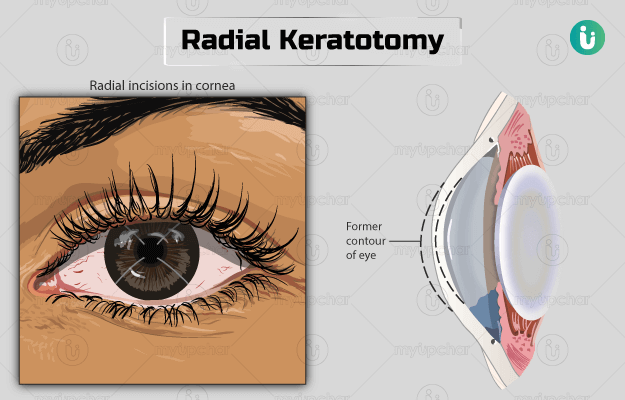Summary
Radial keratotomy is a type of eye surgery performed to treat mild-to-moderate myopia (nearsightedness) and astigmatism. The surgery involves reshaping of the cornea, the clear tissue covering of the eye to improve vision. It takes about 10 to 15 minutes to complete the procedure, and you will be discharged on the same day. During the recovery period, avoid getting water into your eyes. You can resume normal activities in a few days following the surgery.
















